- Choosing the Right Variety
- Growing Space
- Growing Season
- Taste and Texture
- Pest and Disease Resistance
- Intended Use
- Preparing the Soil
- Planting the Seeds
- Providing Adequate Sunlight
- Watering and Fertilizing
- Watering:
- Fertilizing:
- Pest Management
- 1. Identify common cucumber pests
- 2. Implement cultural controls
- 3. Monitor and scout regularly
- 4. Use physical barriers
- 5. Try organic pest control methods
- 6. Use chemical pesticides as a last resort
- 7. Maintain good plant health
- Harvesting and Storage
- 1. Determine the right time to harvest
- 2. Use a sharp knife or shears
- 3. Handling the harvested cucumbers
- 4. Cleaning the cucumbers
- 5. Storing cucumbers
- 6. Shelf life of cucumbers
- 7. Preserving cucumbers
- Expert Advice for Growing Cucumbers
- 1. Choose the Right Variety
- 2. Start with Quality Seeds
- 3. Provide Adequate Sunlight
- 4. Prepare the Soil
- 5. Provide Support for Vine Cucumbers
- 6. Water Consistently
- 7. Watch Out for Pests and Diseases
- “Question-Answer”
- How do I start growing cucumbers?
- What kind of soil do cucumbers need?
- How often should I water my cucumber plants?
- Do cucumber plants need support?
- Are there any common pests or diseases that affect cucumber plants?
- When is the best time to harvest cucumbers?
- “Video” How to Grow MORE Cucumbers (Expert Tips)
Are you interested in growing your own cucumbers, but don’t know where to start? Look no further! This beginner’s guide will provide you with expert advice on how to grow cucumbers successfully. Whether you have a large garden or just a small balcony, you can enjoy the satisfaction of harvesting your own fresh cucumbers.
Step 1: Choose the right variety
Before you start planting, it’s important to choose the right variety of cucumber for your growing conditions. There are many different types to choose from, including slicing cucumbers, pickling cucumbers, and bush cucumbers. Consider the space you have available, the climate in your area, and your personal preferences when selecting the variety.
Expert tip: If you have limited space, consider growing bush cucumbers, which take up less space and are perfect for container gardening.
Step 2: Provide the perfect conditions
Cucumbers thrive in warm weather, so make sure to plant them after the danger of frost has passed. They prefer full sun, so choose a location in your garden that receives at least 6-8 hours of direct sunlight per day. Make sure the soil is well-draining and rich in organic matter. Adding compost or well-rotted manure can help improve the soil fertility.
Expert tip: To ensure good drainage, consider using raised beds or mounds to plant your cucumbers.
Step 3: Start from seeds or seedlings
You have the option to start your cucumbers from seeds or purchase seedlings from a nursery. If you choose to start from seeds, plant them indoors about 3-4 weeks before the last frost date. Once the seedlings have grown to about 3 inches tall, you can transplant them into your garden. If you opt for seedlings, make sure they are healthy and well-established before planting.
Expert tip: When starting from seeds, make sure to provide warmth and humidity to help with germination. Using a seedling heat mat or a plastic cover can help create the ideal conditions.
Step 4: Proper spacing
Cucumbers are known to spread out as they grow, so it’s important to provide enough space between plants. For vining cucumbers, leave about 36-48 inches between plants to allow room for the vines to grow. For bush cucumbers, a spacing of 12-24 inches is usually sufficient. Proper spacing will not only prevent overcrowding, but it will also allow for good air circulation, reducing the risk of disease.
Expert tip: Consider using trellises, fences, or cages to support vining cucumbers and maximize space.
Step 5: Water and fertilize regularly
Cucumbers have high water requirements, so it’s important to keep the soil consistently moist. Water the plants deeply once or twice a week, depending on the weather conditions. Avoid overhead watering, as wet foliage can lead to disease. Additionally, cucumbers are heavy feeders, so make sure to fertilize regularly with a balanced fertilizer or compost.
Expert tip: Mulching around the cucumber plants can help retain soil moisture and reduce weed competition.
Step 6: Regular maintenance
As your cucumber plants grow, make sure to provide support for the vines, especially if you are growing vining varieties. Prune off any damaged or diseased leaves to prevent the spread of disease. Remove any weeds that compete with the plants for nutrients and water. Monitor the plants for any signs of pests or diseases and take appropriate action if necessary.
Expert tip: Regularly harvesting cucumbers will promote more fruit production and prevent the plants from becoming overgrown.
Step 7: Enjoy the bountiful harvest
Once your cucumbers are ready for harvest, simply pick them off the vines. Cucumbers are best when picked young and tender. Enjoy them fresh in salads, make refreshing cucumber water, or pickle them to enjoy later. Share the bounty with your friends and neighbors, and get ready to pride yourself on growing your own delicious cucumbers!
Expert tip: Store harvested cucumbers in the refrigerator to maintain their freshness and crispness for a longer period.
Now that you have the expert advice on how to grow cucumbers, it’s time to get started! Follow these 7 steps, and soon you’ll be enjoying a bountiful harvest of fresh cucumbers grown right in your own garden.
Choosing the Right Variety
When it comes to growing cucumbers, choosing the right variety is essential. There are many different types of cucumbers available, each with its own unique characteristics and growth habits. Here are some factors to consider when selecting a cucumber variety:
Growing Space
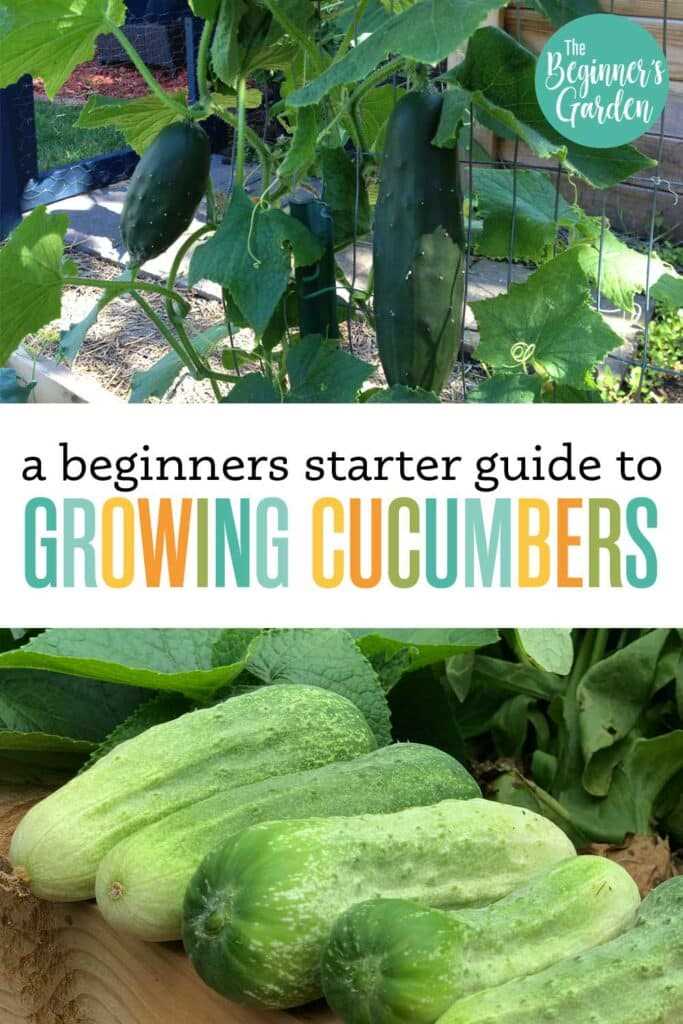
First, consider the amount of space you have available for cucumber plants. If you have limited space, you may want to choose a compact or bush variety that takes up less room. These types of cucumbers are often well-suited for container gardening or small garden plots.
Growing Season
Next, consider the length of your growing season. Some cucumber varieties are better suited for shorter growing seasons, while others require a longer period to reach maturity. Check the seed packet or plant label for information on the number of days to maturity and choose a variety that fits within your growing season.
Taste and Texture
Taste and texture are important factors to consider as well. Some cucumber varieties are known for their crisp and crunchy texture, while others have a softer and milder taste. Consider your personal preference and what you plan to use the cucumbers for when selecting a variety.
Pest and Disease Resistance
Another important consideration is pest and disease resistance. Certain cucumber varieties are more resistant to common pests and diseases, such as cucumber beetles and powdery mildew. Choosing a resistant variety can help reduce the risk of crop loss and the need for chemical interventions.
Intended Use
Finally, think about how you plan to use the cucumbers. Some varieties are better suited for fresh eating, while others are ideal for pickling or slicing. Consider your culinary preferences and choose a variety that aligns with your intended use.
By considering these factors, you can choose the right cucumber variety that will thrive in your garden and provide a bountiful harvest.
Preparing the Soil
Before planting cucumbers, it is essential to prepare the soil properly. This will provide the ideal growing conditions for your plants and help ensure a bountiful harvest. Follow these steps to prepare the soil:
- Choose a sunny location: Cucumbers thrive in full sun, so select a spot in your garden that receives at least 6-8 hours of direct sunlight each day.
- Clear the area: Remove any weeds or debris from the planting area. These can compete with your cucumbers for nutrients and water.
- Loosen the soil: Use a garden fork or tiller to break up the soil to a depth of about 12 inches. This will promote good root growth and allow for proper drainage.
- Amend the soil: Mix in compost or well-rotted manure to improve the soil’s fertility. This will provide the necessary nutrients for healthy plant growth.
- Test the soil pH: Cucumbers prefer a slightly acidic soil with a pH between 6.0 and 7.0. Use a soil test kit to determine the pH of your soil and adjust it if necessary.
- Add organic matter: Incorporate organic matter, such as compost or leaf mold, into the soil. This will improve its structure, drainage, and water-holding capacity.
- Level the soil: Rake the soil surface until it is even and smooth. This will provide a good planting surface for your cucumber seeds or seedlings.
By properly preparing the soil, you will create the optimal growing environment for your cucumber plants. This will increase their chances of thriving and producing a bountiful harvest.
Planting the Seeds
Before you can start growing cucumbers, you’ll need to plant the seeds. Follow these steps to ensure a successful start to your cucumber garden:
- Selecting the seeds: Choose cucumber seeds that are labeled as suitable for the variety you want to grow. There are many different types of cucumbers, including slicing cucumbers, pickling cucumbers, and specialty varieties.
- Preparing the soil: Cucumbers thrive in well-draining soil that is rich in organic matter. Prepare your garden bed by removing any weeds or debris and loosening the soil with a garden fork or tiller. Amend the soil with compost or well-rotted manure to improve its fertility.
- Sowing the seeds: Plant the cucumber seeds directly in the garden bed or in individual containers, depending on your preference. Sow the seeds about 1 inch deep and 6 inches apart, or according to the instructions on the seed packet. Cover the seeds with soil and gently pat it down.
- Watering: After planting the seeds, give them a thorough watering to ensure good moisture penetration. Cucumbers require consistent moisture throughout their growing season, so make sure to water them regularly, especially during dry spells.
- Providing support: Some cucumber varieties, such as vining cucumbers, benefit from being grown on trellises or stakes. Consider providing support for your cucumber plants at the time of planting to prevent them from sprawling on the ground and to save space in your garden.
- Protecting the seedlings: Cucumber seedlings are vulnerable to cold temperatures and pests, so it’s important to protect them. If there’s a risk of frost, cover the seedlings with row covers or cloths to keep them warm. Monitor for any signs of pests, such as aphids or cucumber beetles, and take appropriate action to control them.
- Thinning: Once the cucumber seedlings have developed their second set of true leaves, thin them so that they are spaced about 12 inches apart. This will allow the plants enough room to grow and spread out.
By following these steps, you’ll have successfully planted your cucumber seeds and set the stage for a bountiful harvest. Now it’s time to move on to the next step in growing cucumbers: caring for the plants.
Providing Adequate Sunlight
One of the most important factors in successfully growing cucumbers is providing them with adequate sunlight. Cucumbers are sun-loving plants and require at least 6-8 hours of direct sunlight each day. Without enough sunlight, the cucumbers may become weak, leggy, and fail to produce a bountiful harvest.
To ensure your cucumbers receive enough sunlight, consider the following tips:
- Choose the right location: Select a spot in your garden that receives full sun throughout the day. Avoid areas that are shaded by trees, buildings, or other structures. Cucumbers thrive in bright, sunny areas where they can soak up the warmth and light.
- Provide afternoon shade: While cucumbers need plenty of sunlight, they can benefit from some shade during the hottest part of the day. Consider planting them near taller plants or providing some temporary shade using a shade cloth or garden fabric to protect them from intense midday sun.
- Use reflective surfaces: Maximize the amount of sunlight your cucumbers receive by using reflective surfaces. Place reflective materials, such as aluminum foil or mirrors, around your plants to redirect sunlight onto the cucumbers. This can help enhance their growth and productivity.
- Rotate your plants: If you are growing cucumbers in containers or have limited space, consider rotating the containers or moving them around to different areas of your garden throughout the day. This will ensure that each plant gets adequate sunlight exposure.
By providing your cucumbers with enough sunlight, you are giving them the best chance to thrive and produce a bountiful harvest. Remember to continuously monitor the amount of sunlight they receive and make adjustments as needed to ensure their optimal growth.
Watering and Fertilizing
Proper watering and fertilizing are crucial for the healthy growth of cucumber plants. Here are some tips to help you provide the right amount of water and nutrients:
Watering:
- Water regularly: Cucumbers need consistent moisture to thrive. Aim to water the plants deeply once or twice a week, ensuring that the soil is evenly moist.
- Avoid over-watering: While cucumbers require adequate moisture, over-watering can lead to root rot and other problems. Check the soil moisture before watering and only water if it feels dry about an inch below the surface.
- Water at the base: Direct the water towards the base of the plant, aiming for the soil rather than the leaves. This helps prevent fungal diseases and ensures the roots absorb the moisture efficiently.
- Mulch the soil: Applying a layer of organic mulch around the base of the cucumber plants helps retain moisture, reduces weeds, and regulates the soil temperature.
- Avoid overhead watering: Avoid using sprinklers or other overhead watering methods as they can promote the spread of fungal diseases. Instead, consider using a drip irrigation system or watering at ground level.
Fertilizing:

- Start with a balanced fertilizer: Prior to planting the cucumber seeds or transplanting seedlings, apply a balanced fertilizer with equal parts nitrogen, phosphorus, and potassium. This provides the initial nutrients needed for healthy growth.
- Use organic fertilizers: Organic fertilizers, such as compost, well-rotted manure, or fish emulsion, are excellent choices for feeding cucumber plants. They release nutrients slowly and improve the soil structure.
- Apply fertilizer after planting: Once the cucumber plants have established and started producing vines, feed them with a side-dressing of organic fertilizer. Follow the recommended application rates on the fertilizer packaging.
- Avoid excessive fertilization: While cucumbers require nutrients for optimal growth, over-fertilization can lead to imbalances and nutrient burn. Always follow the recommended application rates and avoid applying fertilizer directly to the leaves or stems.
- Monitor plant health: Regularly inspect the cucumber plants for signs of nutrient deficiencies or excesses. Adjust the fertilizer application or consult a gardening expert if you observe any issues.
By following these watering and fertilizing guidelines, you can ensure your cucumber plants receive the right amount of moisture and nutrients for a bountiful harvest.
Pest Management
Growing cucumbers can be a rewarding experience, but it is important to be prepared to deal with pests that can potentially harm your plants. Here are some tips for managing pests to ensure a healthy cucumber harvest:
1. Identify common cucumber pests
- Aphids: Small, soft-bodied insects that suck sap from cucumber plants.
- Cucumber beetles: Yellow and black striped beetles that feed on foliage and transmit diseases.
- Spider mites: Tiny pests that cause yellowing leaves and can spin webs on plants.
- Whiteflies: Small, flying insects that feed on cucumber leaves and can transmit diseases.
- Slugs and snails: Mollusks that feed on young cucumber plants, leaving holes in the leaves.
2. Implement cultural controls
One of the first steps in pest management is to implement cultural controls to discourage pests from attacking your cucumber plants. Here are some strategies:
- Rotate cucumber plants with non-host crops to disrupt pest life cycles.
- Remove and destroy any diseased or infested plant material.
- Keep the garden clean and free of debris, which can provide hiding places for pests.
- Mulch around cucumber plants to prevent weeds, which can attract pests.
- Provide proper spacing between plants to improve air circulation and reduce pest problems.
3. Monitor and scout regularly
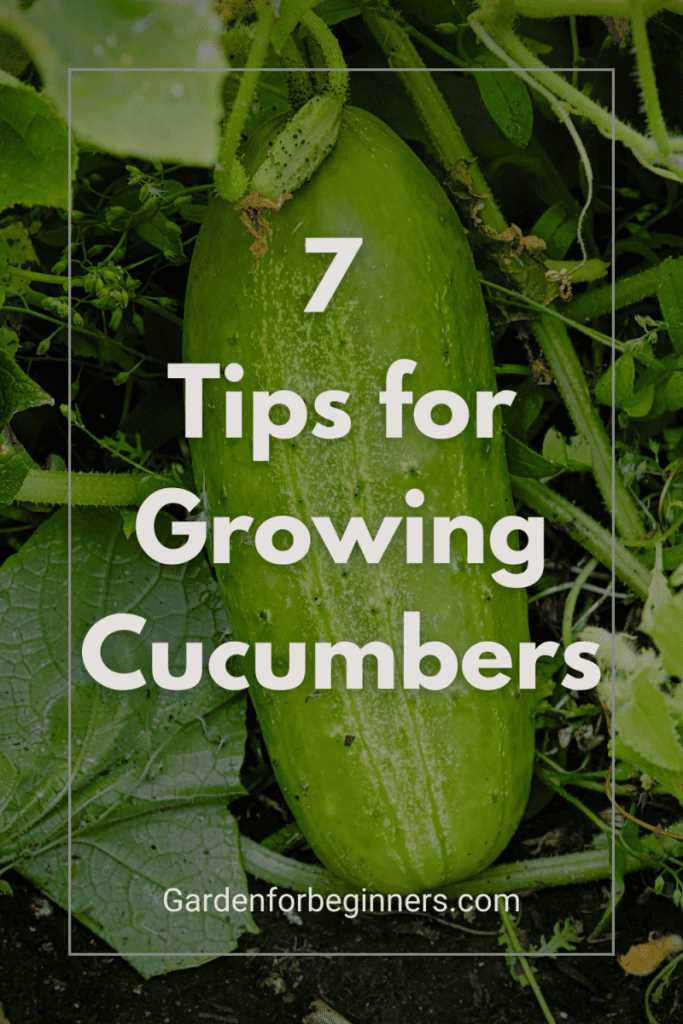
Regular monitoring and scouting of cucumber plants is essential for identifying early signs of pest infestations. Look for signs of pest damage, such as chewed leaves, wilting, or discoloration. Inspect the undersides of leaves for eggs, larvae, or adult pests. Early detection can help prevent infestations from spreading and causing severe damage.
4. Use physical barriers
For some pests, such as cucumber beetles and slugs, physical barriers can be effective in preventing them from reaching your plants. Here are some options:
- Install insect netting or row covers over cucumber plants to keep pests out.
- Create barriers, such as copper tape or diatomaceous earth, around the base of plants to deter slugs and snails.
5. Try organic pest control methods
If chemical pesticides are not your preferred choice, there are several organic pest control methods you can try:
- Neem oil: A natural insecticide that can be effective against aphids, cucumber beetles, and whiteflies.
- Insecticidal soaps: These non-toxic soaps can be used to control aphids and spider mites.
- Bacillus thuringiensis (Bt): A natural bacterium that can control certain caterpillars and larvae.
- Beneficial insects: Introduce predator insects, such as ladybugs or lacewings, to feed on pests.
6. Use chemical pesticides as a last resort
If all other methods fail, you may consider using chemical pesticides as a last resort. However, it is important to carefully read and follow the instructions on the pesticide label. Choose pesticides specifically labeled for cucumber pests and apply them according to the recommended dosage to minimize harm to beneficial insects and the environment.
7. Maintain good plant health
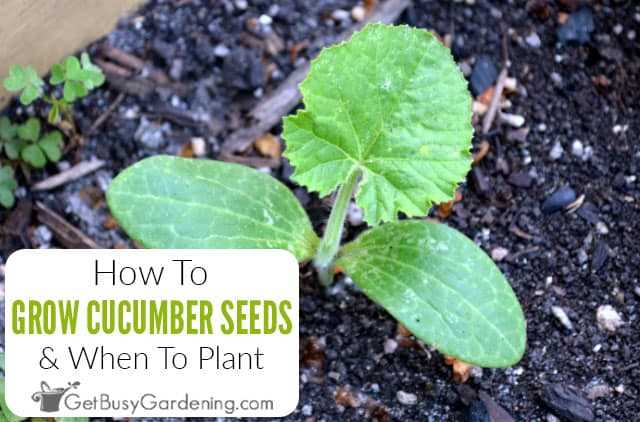
A healthy cucumber plant is more resilient to pest attacks. Provide adequate water, sunlight, and nutrients to keep your plants strong and vigorous. Regularly prune and remove any diseased or damaged leaves to prevent pests from spreading.
By implementing these pest management practices, you can minimize the damage caused by pests and maximize your chances of a bountiful cucumber harvest.
Harvesting and Storage
1. Determine the right time to harvest
Before harvesting cucumbers, it’s important to determine the right time to pick them. Cucumbers are typically ready to harvest when they reach their mature size, which can vary depending on the cucumber variety. In general, pick cucumbers when they are firm and have a bright green color. Avoid harvesting overripe cucumbers as they tend to be bitter.
2. Use a sharp knife or shears
When harvesting cucumbers, it’s best to use a sharp knife or shears to cut the stem just above the fruit. Avoid pulling or twisting the cucumber off the vine, as this can damage the plant. Be careful not to damage the other cucumbers or the vine itself when cutting.
3. Handling the harvested cucumbers

After harvesting, handle the cucumbers with care to avoid bruising or damaging them. Place the cucumbers gently into a container or basket, taking care not to stack them on top of each other. Avoiding dropping or tossing the cucumbers, as this can lead to bruising.
4. Cleaning the cucumbers
Once the cucumbers are harvested, it’s a good idea to rinse them under cool water to remove any dirt or debris. Gently scrub the cucumbers with a soft brush to clean off any remaining dirt. Dry the cucumbers thoroughly before storing them.
5. Storing cucumbers
Cucumbers are best stored in a cool and dry place, such as the refrigerator. Wrap each cucumber individually in paper towels to absorb any excess moisture and place them in a plastic bag or container. Avoid storing cucumbers near fruits that produce ethylene gas, such as apples and bananas, as this can cause the cucumbers to ripen more quickly.
6. Shelf life of cucumbers
Freshly harvested cucumbers can last up to a week when stored properly. However, it’s best to consume them as soon as possible for optimal flavor and texture. The longer cucumbers are stored, the more their flavor and texture may deteriorate.
7. Preserving cucumbers
If you have harvested a large quantity of cucumbers and cannot consume them all within a week, consider preserving them to enjoy them for longer. Cucumbers can be pickled, canned, or made into relish to extend their shelf life. There are many recipes available online for different preservation methods.
| Tip | Description |
|---|---|
| Harvest in the morning | Harvest cucumbers in the morning when they are the coolest and most hydrated. |
| Check for firmness | Ensure the cucumbers are firm before harvesting to ensure optimal taste and texture. |
| Store away from ethylene producers | Avoid storing cucumbers near fruits that produce ethylene gas to prevent premature ripening. |
| Handle with care | Be gentle when handling harvested cucumbers to avoid bruising or damage. |
| Preserve excess cucumbers | If you have a surplus of cucumbers, consider preserving them through pickling, canning, or making relish. |
Expert Advice for Growing Cucumbers
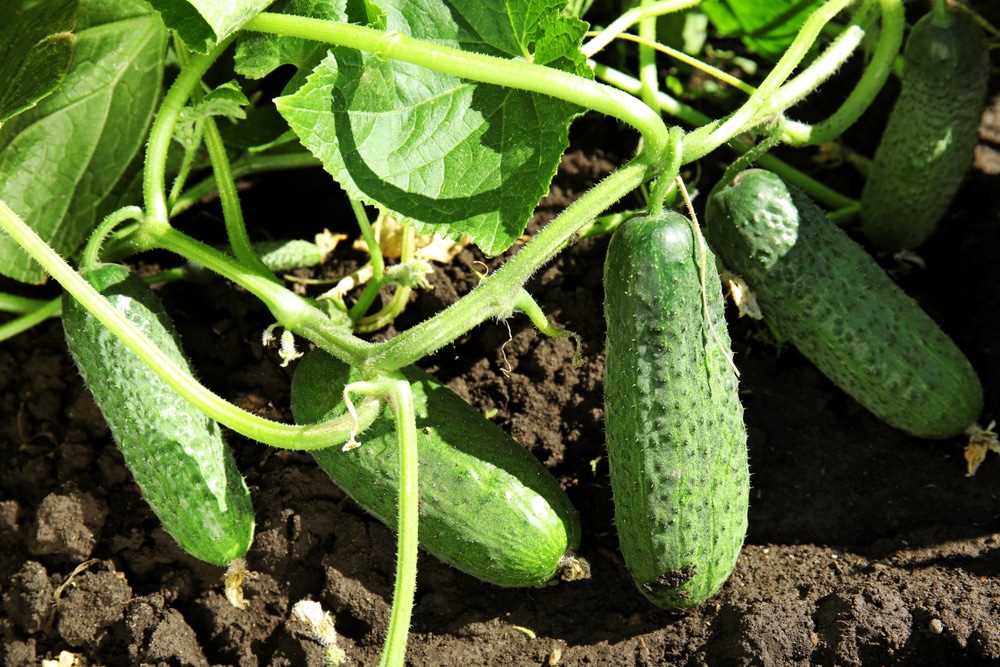
1. Choose the Right Variety
When it comes to growing cucumbers, it’s important to choose the right variety for your climate and growing conditions. There are several types of cucumbers to choose from, including slicing cucumbers, pickling cucumbers, and specialty varieties.
Consider factors such as the length of your growing season and whether you plan to grow your cucumbers indoors or outdoors. Some varieties are better suited for shorter growing seasons or container gardening.
2. Start with Quality Seeds
Starting with high-quality seeds is essential for growing healthy and productive cucumber plants. Look for seeds from reputable suppliers or consider saving seeds from a previous successful cucumber harvest.
Before planting, soak the cucumber seeds in water for a few hours to help improve germination rates.
3. Provide Adequate Sunlight
Cucumbers require full sun to thrive and produce a bountiful harvest. Make sure to choose a planting location that receives at least 6-8 hours of direct sunlight each day. If you’re growing cucumbers indoors, place them near a sunny window or use grow lights to provide adequate light.
4. Prepare the Soil
Prepare the soil well before planting cucumbers. Cucumbers prefer well-draining soil that is rich in organic matter. Remove any weeds or grass from the planting area and incorporate compost or aged manure to improve soil fertility.
Consider conducting a soil test to check the pH level of the soil. Cucumbers thrive in slightly acidic soil with a pH range of 6.0-7.0.
5. Provide Support for Vine Cucumbers
If you’re growing vining cucumbers, such as English cucumbers, it’s important to provide them with support as they grow. Use sturdy trellises or stakes to support the vines and keep the cucumbers off the ground. This helps to prevent rot and improves air circulation around the plants.
6. Water Consistently
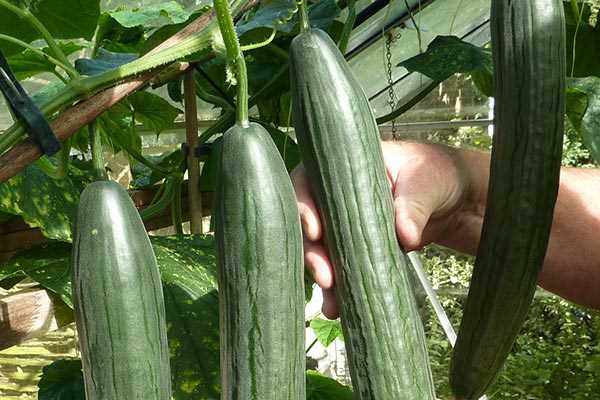
Cucumbers need regular and consistent watering to ensure healthy growth. Keep the soil evenly moist, but avoid overwatering, as this can lead to fungal diseases.
Water at the base of the plants to avoid wetting the foliage, as wet leaves can also contribute to disease development. Consider using a drip irrigation system or a soaker hose to deliver water directly to the plant roots.
7. Watch Out for Pests and Diseases
Cucumbers can be susceptible to various pests and diseases, including cucumber beetles, aphids, powdery mildew, and bacterial wilt. Monitor your plants regularly and take action at the first sign of trouble.
Consider using organic pest control methods, such as handpicking pests or using insecticidal soaps, and practicing good garden hygiene to prevent the spread of diseases.
Rotate your cucumber plants each year to help prevent the buildup of pests and diseases in the soil.
By following these expert tips, you’ll be well on your way to growing bountiful cucumbers in your garden. Enjoy the fresh taste of homegrown cucumbers all season long!
“Question-Answer”
How do I start growing cucumbers?
To start growing cucumbers, you will need to prepare the soil by adding compost or organic matter to improve its fertility. Then, you can sow cucumber seeds directly into the soil or start them indoors and transplant them later. Make sure to provide them with ample sunlight, water, and support as they grow.
What kind of soil do cucumbers need?
Cucumbers thrive in well-drained, loamy soil that is rich in organic matter. It is important to ensure that the soil has good drainage to prevent waterlogging, which can lead to root rot. Adding compost or aged manure to the soil can help improve its fertility and drainage capabilities.
How often should I water my cucumber plants?
Cucumber plants need regular watering to ensure their growth and development. Generally, they should be watered deeply at least once a week, providing enough water to saturate the root zone. However, the frequency may vary depending on weather conditions and the moisture retention capacity of the soil.
Do cucumber plants need support?
Yes, cucumber plants benefit from having support as they grow. This can be in the form of trellises, stakes, or cages. Providing support helps keep the plants upright, reduces the risk of diseases, and makes harvesting easier. It also allows the vines to grow vertically, saving space in the garden.
Are there any common pests or diseases that affect cucumber plants?
Yes, cucumbers can be susceptible to certain pests and diseases. Common pests include cucumber beetles, aphids, and spider mites. Diseases that can affect cucumber plants include powdery mildew, downy mildew, and bacterial wilt. Regular monitoring, proper sanitation, and the use of organic pest control methods can help manage these issues.
When is the best time to harvest cucumbers?
The best time to harvest cucumbers is when they are firm, crisp, and have reached their desired size. Different varieties may have different optimal sizes, so it’s important to refer to the specific variety’s guidelines. It is generally recommended to harvest cucumbers before they become overripe or yellow, as they can become bitter and less flavorful.







